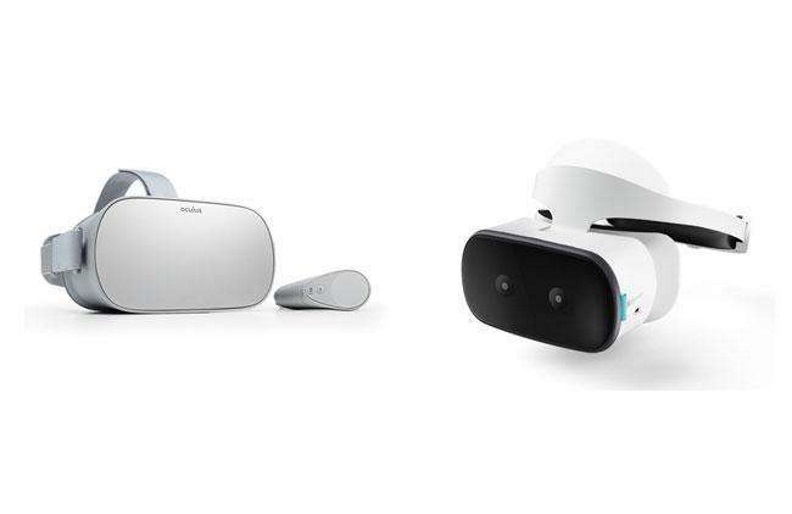2018 marks the year stand-alone VR headsets are available for everyone.
Finally, virtual reality becomes easy to use. No cables, no sliding phones and out and no PC. Stand-alone virtual reality headsets are becoming available from various brands. The first two launching in the US are the Lenovo Mirage Solo and the Oculus Go. The HTC Vive Focus has so far only been released in China and is according to HTC coming later this year.
To decide The Lenovo Mirage Solo stand-alone VR headset is available for pre-order now at Amazon for $399.99. The Mirage Solo will ship on May 6. The $199 Oculus Go has no release date yet, but is supposed to arrive early 2018. The Oculus Go costs only half of the Lenovo Mirage Solo. Should you pre-order the much more expensive Lenovo Mirage Solo or wait for the affordable Oculus Go? There are several differences between Lenovo’s and Oculus’s stand-alone VR headsets.
The biggest difference is in the tracking. The Oculus Go only has a 3DoF tracking. The headset tracks the rotation of your head left to right and up and down. This is similar to a mobile phone based HMD such as the Samsung Gear VR.
The Lenovo Mirage Solo has 6DoF tracking called WorldSense. WorldSense, on Google’s Daydream virtual reality platform, lets you move around and explore your virtual environments with leaning, dodging or ducking. The Mirage Solo is doing this without external sensors. The WorldSense tracking on the Lenovo Mirage has a tracking area of about 5 feet (150cm).
The WorldSense tracking is taking immersion to the next level, but VR content needs to support the additional tracking. This will take a while and there is no guarantee that content developers will mass adopt the technology.
From the technical specifications aspect, the Lenovo Mirage Solo is more powerful. It runs on a Qualcomm Snapdragon 835 chipset with 4GB of RAM and 64GB of storage. Other features include a dual microphone, a headphone jack and a 2,560 x 1,440 LCD screen. Battery life is supposed to be 7 hours.
The Oculus Go runs on the weaker Qualcomm Snapdragon 821 (14nm technology). The 10nm Snapdragon 835 is 27% faster while consuming 40% less energy. This suggests that the battery life on the Oculus Go will be shorter than on the Mirage Solo. The visuals on the Oculus Go are based on the same resolution of 2,560×1,440px like the Mirage. Oculus re-engineered the optics on the Oculus Go and they are supposed to be really good according to first hands-on tests.
The Oculus Go will support over 1,000 apps from the Oculus Store. Sideloading of apps is supposed to be possible, which would be important for adult content use on the Oculus Go.
Facebook did for some reason not add an SD Card slot into the Oculus Go. The Mirage Solo’s storage can be expanded via SD cards. The Oculus Go will be getting support for micro USB based storage drives.
Both virtual reality headsets come with a simple 3DoF controller. There is no real difference here.
Facebook has still not completely unveiled all details of the Oculus Go. The $199 price point is making the Oculus Go for casual and hassle-free virtual reality experiences. The more expensive Mirage Solo offers cutting-edge tracking that lets you immerse deeper in virtual words if the apps and games support the 6DoF WorldSense tracking.
Another positive for the Lenovo Mirage is the optional VR camera that records 180×180 degree video, ideal for consumption with the Solo. The Lenovo Mirage camera sells for $299 and is available for pre-order now.
Pre-order the Lenovo Mirage Solo stand-alone VR headset now at Amazon if you have made up your minde. The Mirage Solo will ship on May 6. To The $199 Oculus Go is listed on Amazon.com. If you like to be one of the first to own the Oculus Go, get the free The Tracker App to receive a notification on your smartphone as soon as the Oculus Go are in stock or are available for pre-order.
This article was originally published by I4U News.

